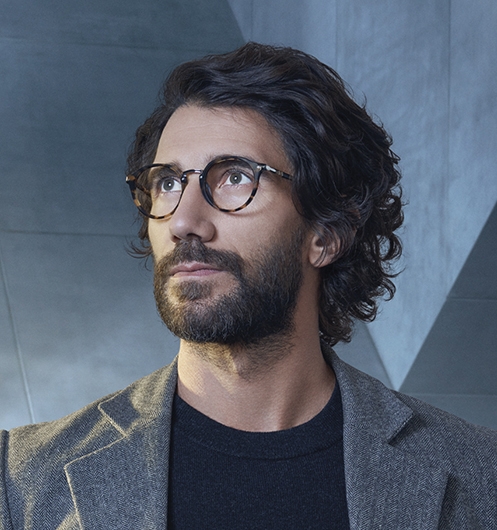If you suffer from presbyopia your optician will recommend Varifocal lenses to correct your vision. Varifocal lenses are the perfect solution for helping you to see clearly at different distances; near, far and everything in between. Varifocal lenses offer sharp vision with just one pair of lenses, whether you’re driving, using your phone or reading. Sometimes known as progressive lenses, modern varifocal lenses allow you to experience maximum vision benefits suited to your lifestyle needs.
Essilor invented the first varifocal lens in 1959 and we are the #1 lens manufacturer in the world. Our range of varifocal lenses ensures continuous and fluid vision across all 3 vision zones. We can offer specifically designed varifocal lenses to suit popular activities, including driving and using digital screens.
Keeping up with your fast-paced lifestyle, Essilor varifocal lenses ensure comfortable vision at any distance. Using breakthrough technology, varifocal lenses from Essilor are easy to adapt to, whether you’re a first-time wearer or already have experience.
WHAT IS A VARIFOCAL LENS?
A varifocal lens is a lens used to correct eyesight conditions, specifically presbyopia.
Varifocal lenses are created with a gradual, changing power from the top to the bottom of the lens. This allows you to see across different vision zones, including near, far and in between. This is due to different parts of the lens being optimised for the various distances.
Varifocals are worn by those who require multiple vision corrections for refractive errors brought on by presbyopia. This is a natural, age-related condition that means it can become difficult to see things up close, and usually happens when you're around 40 years old and continues to progress.
Varifocal glasses correct your vision so you can read text up close and see things clearly in the distance. No more having to switch between your reading glasses and your distance spectacles.

A BRIEF HISTORY OF THE VARIFOCAL LENS
An optical engineer, known as Bernard Maitenaz, calculated and invested a new type of lens to correct presbyopia. Previously, presbyopia was treated with the use of bifocal glasses which Maitenaz saw as flawed. His vision was to create a solution that would provide wearers with corrected distanced and reading vision in one continuous way without breaking the image. It took eight years to develop the first varifocal lens, known as Varilux, which was released in 1959.
Fast forward 60 years and wearers can now choose from several different varifocal glasses to match their eyesight and lifestyle needs.
WHAT IS THE DIFFERENCE BETWEEN BIFOCAL AND VARIFOCAL LENSES?
Bifocal and varifocal lenses differ due to the way the power is distributed through the lens. Bifocals only have two defined sections for near and distance vision, separated by a visible line on the lens itself. The lower part of bifocal lenses are usually to correct near vision, while the top part is to correct your distance vision. Wearers often need to look up and down through the right part of the lens to see near or far.
On the other hand, varifocal lenses are characterised by a much more gradual change in the power within the lens. Varifocal lenses work by having a distance prescription in the top part of the lens with a gradual prescription change down the lens to the needed reading prescription in the bottom of the lens. There is no identifiable line or segment improving the lens aesthetics and it also creates a much smoother transition between the different vision distances. Varifocals reduce the need for head movement to see clearly; simply just look through any part of the lens to experience sharp vision.

Left: Varifocal glasses diagram demonstrates the three vision zones; distance, intermediate and near.
Right: Bifocal glasses diagram demonstrates the reading segment.
| VARIFOCAL LENSES | BIFOCAL LENSES |
|---|---|
| Varifocal lenses are a progression of the bifocal lens design | Bifocal lenses are split into two parts |
| No lines are shown on the lens, it looks the same as a single vision lens | People looking at a wearer can see the segment line on the lens |
| Varifocal lenses can provide three vision zones; distance, near and intermediate vision | The lower part of the lens is usually to correct reading vision |
| Varifocals provide you with a much smoother transition between the different vision zones | The top section of the lens is to correct your distance vision |
| A more gradual prescription change in the lens ensures your vision feels more natural | Wearers need to look up and down through the right part of the lens to see clearly |
| There are many different designs to match all prescriptions, lifestyles and budgets | Can lead to disorientation for the wearer due to the sudden difference in prescription |
HOW MUCH DOES A PAIR OF VARIFOCAL GLASSES COST?
This is a common question when the time comes to wear varifocal lenses. The cost of varifocal lenses greatly depends on the quality of the lenses, as well as your vision needs. At Essilor, we have created lens solutions that are perfectly tailored to your needs and our partner opticians obtain the right measurements for your lenses based on your physiological behaviour.
Our varifocal lenses are comfortable, easy to adapt to and suit your vision needs. Keep this in mind when thinking about your budget. After all, you can’t put a price on perfect vision.
WHAT ARE THE BEST VARIFOCAL LENSES?
The best varifocal lenses can depend greatly on your needs and your prescription. Essilor varifocal lenses are specifically designed to suit various benefits and purposes and it’s important to make sure you’re wearing the correct lens solution. Your optician can help you choose the best varifocal lenses and lens technology to improve your vision.
We offer different varifocal lenses for digital activities, driving and everyday wear. With innovative technology, we have developed lens solutions that provide quick adaptation, reduce image distortion and expand your fields of vision.
DISCOVER VARILUX VARIFOCAL LENSES





